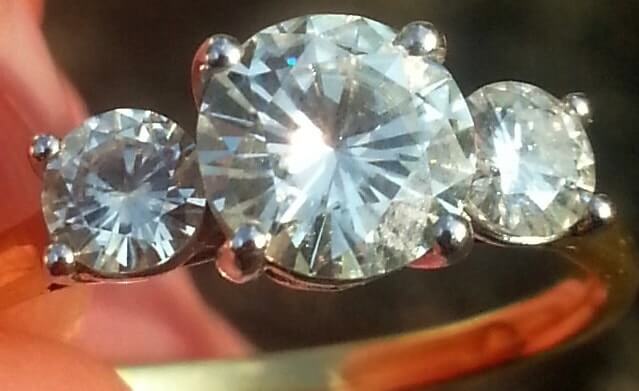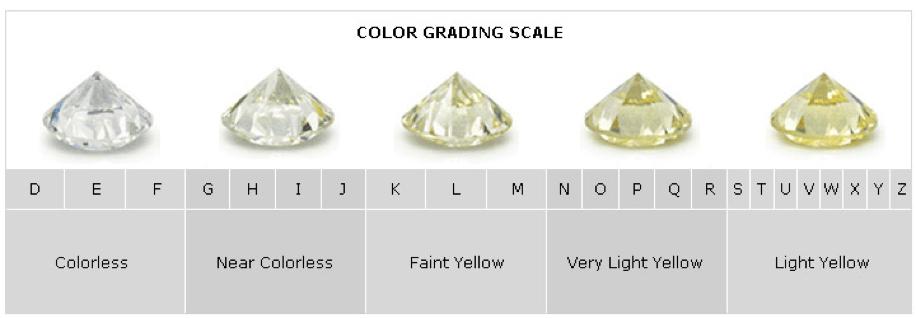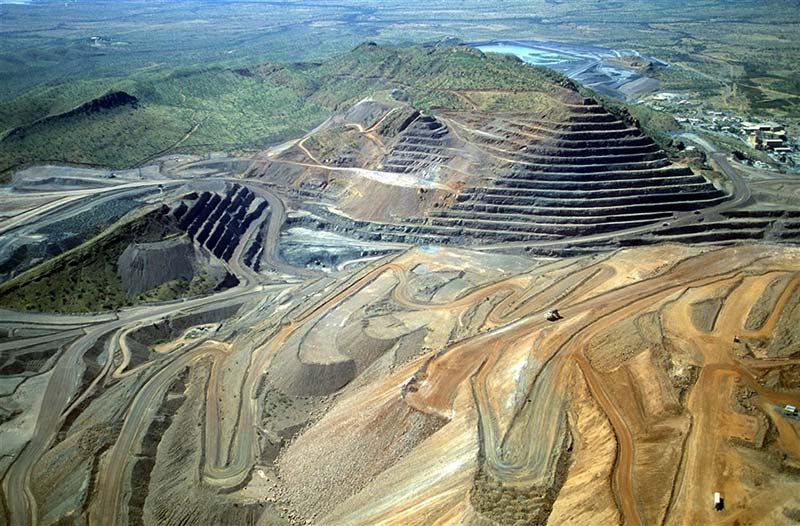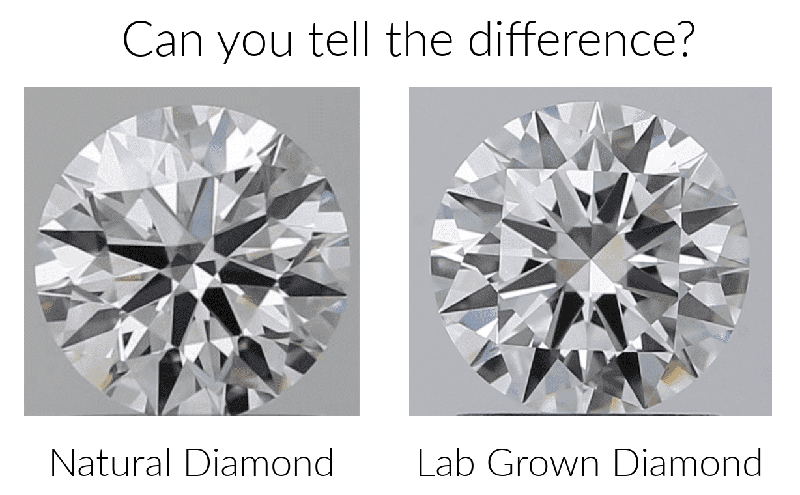Are Man-Made Diamonds Real?
This is a question you may start to ponder in the early research stage of your diamond buying process. Most jewelers nowadays offer both naturally mined and lab made diamonds as options for your engagement ring. You may have also noticed the big price difference, and are trying to convince yourself they are just as good, and save yourself enough cash to spring a whole honeymoon out of the deal. But, the question still asks - are they actually legit, or just a cheap imitation of the real-deal diamond?
What is a diamond?
The FTC (the guys who keep all of us in check to provide consumers proper information) say: “a diamond is a mineral consisting essentially of pure carbon, crystallized in the isometric system”. In easier to understand terminology, a diamond is a mineral that is made up of crystallized carbon, that has equal dimensions. This means no matter whether it came out of a lab or the ground, they have to be chemically identical in order to be called a diamond. We’ll go into how the came to be in a little bit, but for now- yes. They are real.
What is a simulant and why are they different than lab grown?

These little glittering fellows are going to look like a diamond, but have little things about them that just don’t quite seal the deal. Simulants would include stones like cubic zirconia (CZ), moissanite and white sapphire to name a few of the popular ones. You’ll notice that moissanite offers almost TOO much fire (flashes of color) to pass as a diamond. CZ comes in close but is too soft on the Moh’s scale to be comparable. White sapphire shines, but doesn't have that special sparkle diamonds do.
All of these could be used in place of a diamond, but to a trained eye, none will be passable. The difference here, whether these imitators were grown in the earth or the lab, is that chemically, when broken down to their atomic state, they are totally different compositions. Easily put - a diamond is a diamond because the carbon was processed and heated into a new structure and only because of that. This also means that lab grown diamonds have to have identical properties to a natural, mined diamond from the Earth. This would include:
- Hardness of 10 on the Moh’s scale
- Refractive index of 2.417-2.419
- Chemical composition C (carbon)
- Specific gravity of 3.4-3.6
If it doesn’t have these properties, it isn’t a diamond. And if it does, then it’s a diamond. While many may argue the only “real” diamonds come from the ground, if we think about it, it’s the material, or mineral itself that makes it real… not where it came from. mic drop
Okay, back to it. So I’m starting to win you over with lab growns, but what are the real advantages? What are the disadvantages?
Advantage number 1:

Price tag. It’s crazy expensive, time-consuming (we’re talking multiple decades here sometimes), labor-intensive and sometimes a total loss to mine natural diamonds. They have to get permits before they can even go look at the spot they think they might find something. Then they have to have engineers and environmentalists see the stake and agree this is an okay endeavor. And then fingers crossed, after all that, they get diamonds. And sometimes they don’t. So imagine how much less expensive something would be if you knew it was guaranteed to work and produce quality material. Ding ding ding! Lab grown diamonds here to save the day.
Of course, there is a lot of research and planning that is involved in growing the actual stones and setting up the lab equipment, but this means that at the end of the day - you’ll have something to sell. You can offer your diamonds at a much more competitive price than naturals because of this. Typically 30% or more is slashed from what a natural stone would cost you. And that percentage goes up as the carat weight goes up. Because of the rarity of a huge mined diamond, the bigger the natural stone would be, the more of a price savings you get with a lab grown.
I should mention - natural diamonds are expensive because of a few things: rarity and demand. While there are actually a lot of diamonds floating around in the earth, there aren’t many that are clean and low in color (the usual expectations for setting in a ring). The demand is there because, over the past 150 years or so, marketing done by some of the big players in the field have convinced us diamonds are the way to go for marriage proposals - increasing the demand. Lab made diamonds are more plentiful at better clarity and color grades since it’s a controlled environment. And the demand is lower, because a lot of consumers are stuck on choosing the stone that came from the ground, over one in a lab. It’s no surprise that lab made diamonds are taking a bit to gain footing, but in the meantime, until that demand grows enormously, they are much less expensive.
Advantage #2 Color and clarity

Now, keep in mind - grading labs like GIA, IGI, and GCAL grade lab-developed diamonds against the same standards as natural, but have to list that they were grown in a lab. That’s the only difference. So a VS1 lab made diamond, will have the same typical inclusions and same typical amount as a natural VS1. Same with color - a G grade lab grown will have just as much of a color tint as its twinsie G grade natural. However, since lab-grown are created in an environment that’s closed off, controlled and clean as a whistle, there are an increased number of better quality lab-grown diamonds than naturals. In this case, you can find a better color and clarity grade for a lower cost than their natural counterparts.
Disadvantage #1 Resale
Natural diamonds are almost like a “just in case” policy. Meaning, if you bought a nice big 5 carat diamond, if you ever got to a point where you were strapped for cash, you could turn around and sell that sucker to get some food on the table and keep your house a few more months. However, you won’t get as much as you paid originally (usually about 1/2), but it’s still something.
Lab made do not currently have much resale value. Since they are grown quickly (usually a few weeks is all it takes) someone can easily just purchase a new diamond rather than one that has been "used". That doesn't mean there wouldn't be personal buyers, but a lot of jewelers wouldn't be as interested in buying your lab made diamond as they would with natural. However, the public is starting to be more keen to lab made, so this could change very soon!
But in reality, if this is a rock you’re going to keep forever, and are already spending less on it in the first place, it’s worth not having that monetary assurance for resale because you’re already spending $110k less than the huge natural you could have gotten.
Pro/con #2 Environmental impact

This one is a little tough. It really puts both natural and lab diamonds in about the same category, giving here and taking there. Lab built diamonds don’t have the impact on the earth’s crust as mined diamonds do. You don’t have to touch the ground, move it, strip away important minerals and elements that keep the nature around it alive. But, the labs can produce a large carbon footprint due to the energy needed to grow the diamonds. It’s highly debated on which has more impact, and if the work that’s provided to the surrounding communities where natural mines are located is worth the destruction of ground. Both of these have their negative and positive impacts on communities that profit from them, and the the Earth itself.
Can you tell the difference?

Nope. Not unless you’re trained to see it. If you placed a natural diamond, and a lab produced diamond side by side, even a gemologist wouldn’t be able to immediately point out which was which. The only way to tell is to do some sleuthing. Using a microscope or loupe, the professional will look for traits that are common only to one or the other. Things like metallic flux inclusions are only found in lab farmed diamonds, because the flux is what the diamond grows in. This is not found in nature. Things like mineral crystals and twinning wisps are only found in natural diamonds, due to the conditions, impurities and amount of time they grew in. Either way, you won’t be able to tell any kind of a difference because…they have the same properties! Visually, they are exactly. The. Same.
How are lab farmed diamonds created?
There are two ways to grow LGD’s. CVD (chemical vapor deposition) and HPHT (high pressure, high temperature).
CVD- involves adding a gas to a small controlled vacuum chamber, then activating the molecules of the gas with microwaves, to cause the carbon atoms to accumulate on a diamond seed, and match the chemical structure of it, leading to a diamond.
HPHT- a small diamond seed is placed into pure carbon in a chamber, free of any other trace elements. The seed is then subjected to super intense heat and pressure, mimicking how the earth creates its own diamonds deep down in the crust. Once the carbon starts to melt and change its composition, it starts to form diamond around the seed. After it hits its changing point, everything is cooled off, and a diamond is formed.
Regardless of either of these origins, you still have something chemically identical to a mined diamond, and can be cut and received as a lab cultivated diamond.
So what’s the verdict? Are they actually real and which one should I choose?
I will shout it from the rooftops - LAB GROWN DIAMONDS ARE REAL! They are totally legit, and a lot of the population is starting to catch on. Okay. Taking a breath here.
Now, when it comes to which one is better, while I’m super pro lab grown, I’m also super pro natural. There’s something about having a diamond you know came from deep beneath the surface, is over a billion years old, and all the hard work it had to go through to get to where it is today. It’s just kind of a cool feeling to think about how a piece of carbon could turn into that brilliant rock on your finger. Some people are just stuck on the idea of getting their diamonds from the ground, and that’s totally okay.
On the other hand, lab manufatcured diamonds are a great option for someone who doesn't want to spend a whole lot on the ring, but still give their love (or themselves) something nice that will last forever. And a lab grown will do just that. Or, if you want a really big chunk of crystallized carbon, but don’t want to spend as much as buying a house, that makes sense too. If you can give up the fact that it didn’t come from the ground, but is still a diamond, then lab growns are a great way to go.
There’s no right or wrong answer here- really, think to yourself, what is going to make you happy in 5, 10, 50 years? Would you look down and wish the diamond came from the ground instead of a lab? Or would you wish you would’ve spent less to get something that looks the same? Or maybe it’s neither and you wish it was bigger. We all have our idealistic views when it comes down to something so sentimental and emotionally tied. And that’s okay. But now you know your answer, and can take an educated stab at where to go from here.

